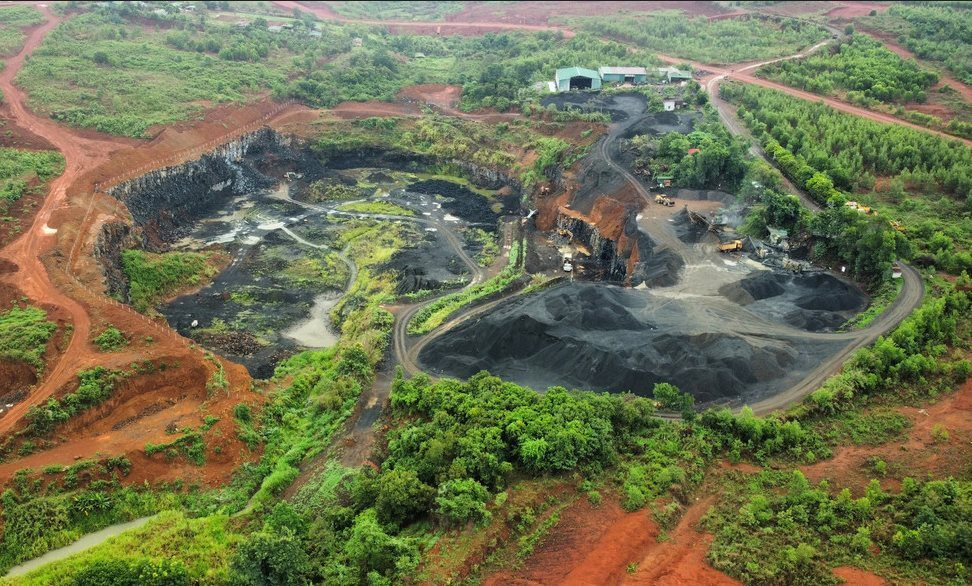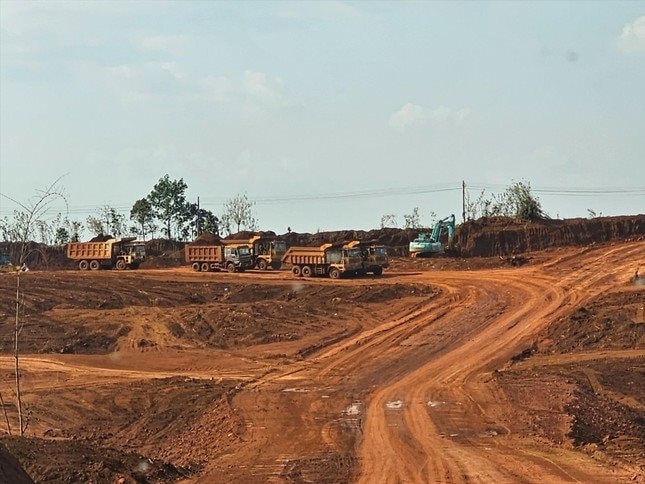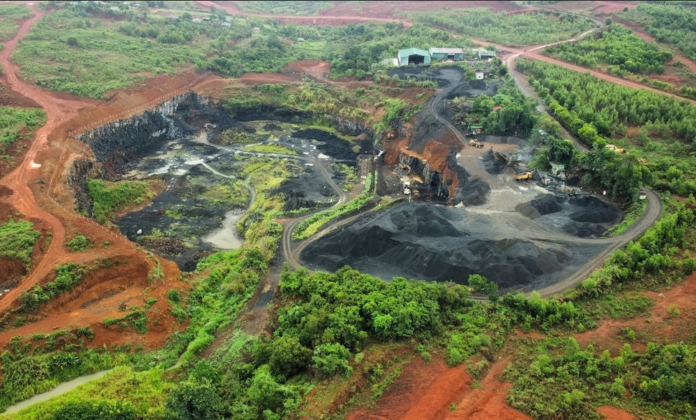
According to the latest data from the US Geological Survey, Vietnam ranks second in the world for its bauxite reserves (only after Guinea), with approximately 5.8 billion tons. This is an impressive figure, surpassing other countries such as China (710 million tons), Russia (480 million tons), and the United States (20 million tons).
Bauxite is an aluminum ore.
From bauxite, we can extract alumina, the primary material used in aluminum smelting through electrolysis. The process of producing aluminum from bauxite ore involves two crucial steps: alumina production and electrolysis of alumina to obtain aluminum (Al). Only a few countries worldwide possess this valuable resource, and Vietnam is recognized as one of the leading nations in bauxite reserves.
In Vietnam, Dak Nong province leads the country in bauxite reserves. As stated by the Vice Director of the Vietnam Geological Survey, Dak Nong boasts an immense potential for bauxite ore, with estimated reserves of approximately 1.8 billion tons of high-grade ore, equivalent to 4.2 billion tons of raw ore, and an aluminum content exceeding 40%. Currently, bauxite deposits occupy around 35% of Dak Nong’s natural area, accounting for over 57% of the country’s total reserves.
What Has the Province with Vietnam’s Richest Treasures Proposed?

Dak Nong’s bauxite reserves are located on one-third of its natural land area. Source: HT
In reality, the provinces of Lam Dong, Binh Thuan, and Dak Nong will merge into a new administrative unit named Lam Dong in the near future. The political and administrative center is expected to be established in Da Lat city. Consequently, the new Lam Dong province will encompass an area of over 24,233 km2, making it the largest province in Vietnam, with a diverse geography spanning from the highlands to the coastal areas.
Notably, the new Lam Dong province will possess the ‘richest treasures’ in the country, including valuable minerals such as bauxite and titanium. According to statistics, the current Lam Dong province has over 1 billion tons of bauxite, 380 sites of metallic and non-metallic minerals, 7 sites of sapphires, and 38 mineral water mines. Dak Nong province, on the other hand, holds approximately 1.8 billion tons of bauxite, contributing over 57% of the nation’s total bauxite reserves.
Meanwhile, Binh Thuan province is also endowed with abundant titanium reserves, amounting to approximately 599 million tons of titanium placer deposits (accounting for 92% of the country’s total) and numerous mines of glass sand, gold, bentonite, zircon, tin, and bicarbonate mineral water. Additionally, the offshore area of Binh Thuan is home to significant oil fields like Su Tu Den, Su Tu Vang, and Rang Dong, which are currently being exploited with high yields. The government also envisions establishing this region as a national oil and gas reserve center in the future.
Given these facts, the new Lam Dong province has recently proposed to retain a minimum of 50% of the revenue from minerals and energy sources to reinvest in infrastructure development, technology, healthcare, and education. This financial mechanism is intended to provide a boost for the region’s rapid and sustainable development.
Furthermore, to effectively harness the potential of the merger, Lam Dong province has petitioned the government and relevant central ministries to prioritize infrastructure investment and offer investment incentives, along with a management mechanism that aligns with the regional characteristics. This will facilitate harmonious and balanced development. Specifically, the province has suggested allocating resources to upgrade vital national highways, such as National Highways 20, 27, 28, 28B, and 55, to connect key economic regions.
Additionally, Lam Dong province has emphasized the need to expedite the construction of several expressway projects, including Dau Giay – Lien Khuong (North-South axis), Nha Trang – Da Lat, and Binh Thuan – Dak Nong (East-West axis). These expressways will not only reduce travel time but also expand the development space and establish a strategic economic corridor connecting the Central Highlands with the South Central Coast.
The province has also proposed investing in information technology infrastructure to support digital transformation and the establishment of an e-government system. Given the dispersed nature of its 124 communes and townships, developing digital infrastructure is imperative to enhance governance effectiveness and better serve the people.
Unlocking the Golden Potential: Will Binh Duong Attract Another Tech Giant?
This leading global enterprise is planning to expand its investment operations in Vietnam. With a strong presence already established in the country, the company is now looking to further strengthen its position and tap into the vibrant and burgeoning Vietnamese market. This expansion underscores the company’s commitment to driving growth and creating long-term value, not just for itself but also for the local economy and community. Details of the investment plan are yet to be unveiled, but the company assures that it will bring about significant developments and exciting opportunities for all stakeholders involved.
“Vietnam and Thailand Elevate Ties: Strategic Commitment, A New Leap Forward.”
On May 16, following the co-chairmanship of the 4th meeting of the Vietnam – Thailand Joint Cabinet, Prime Minister Pham Minh Chinh and his Thai counterpart, Paetongtarn Shinawatra, held a joint press conference. They announced that the two countries have officially elevated their relationship to a “Strategic Partnership.”





















